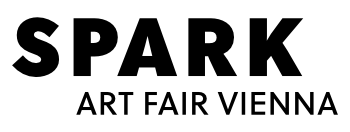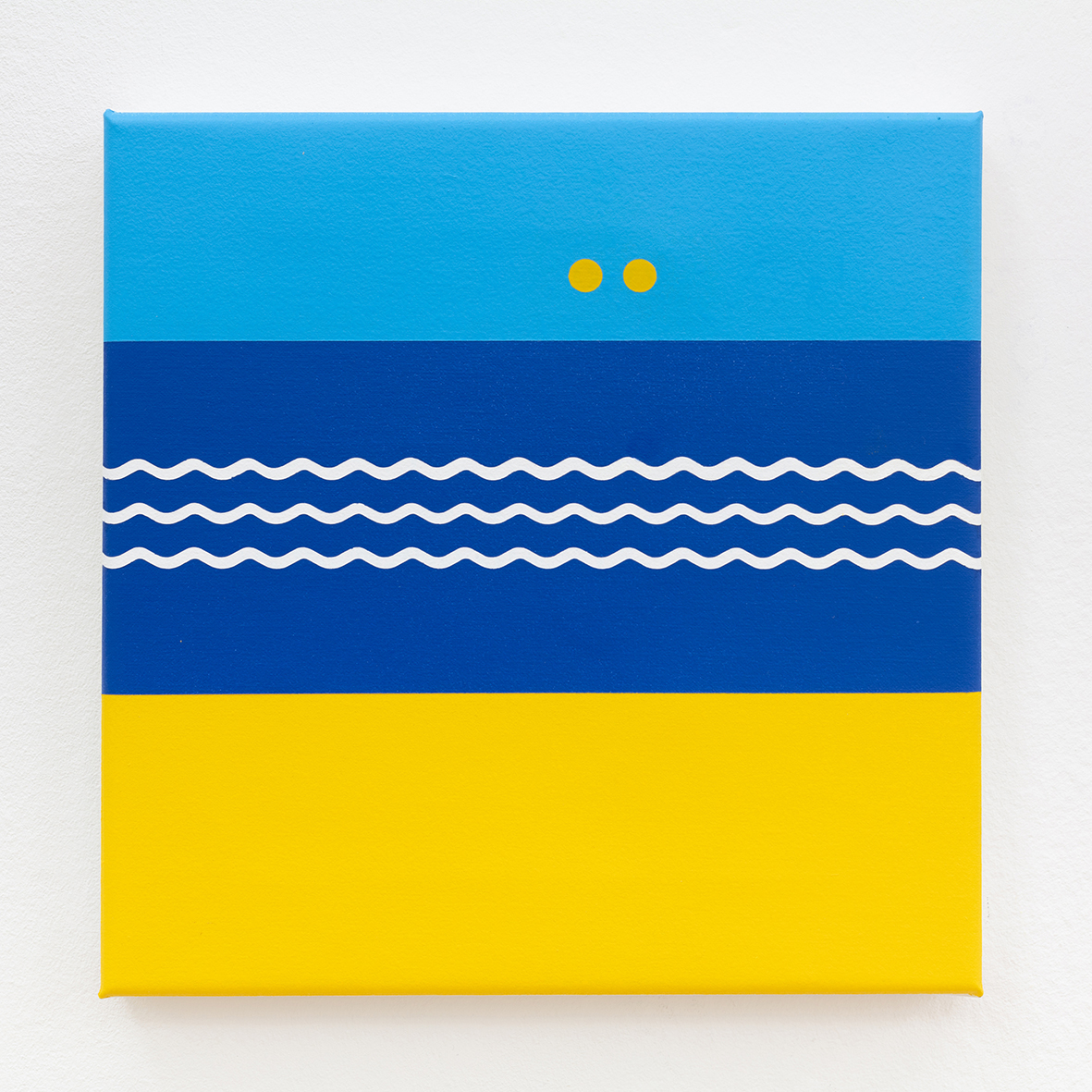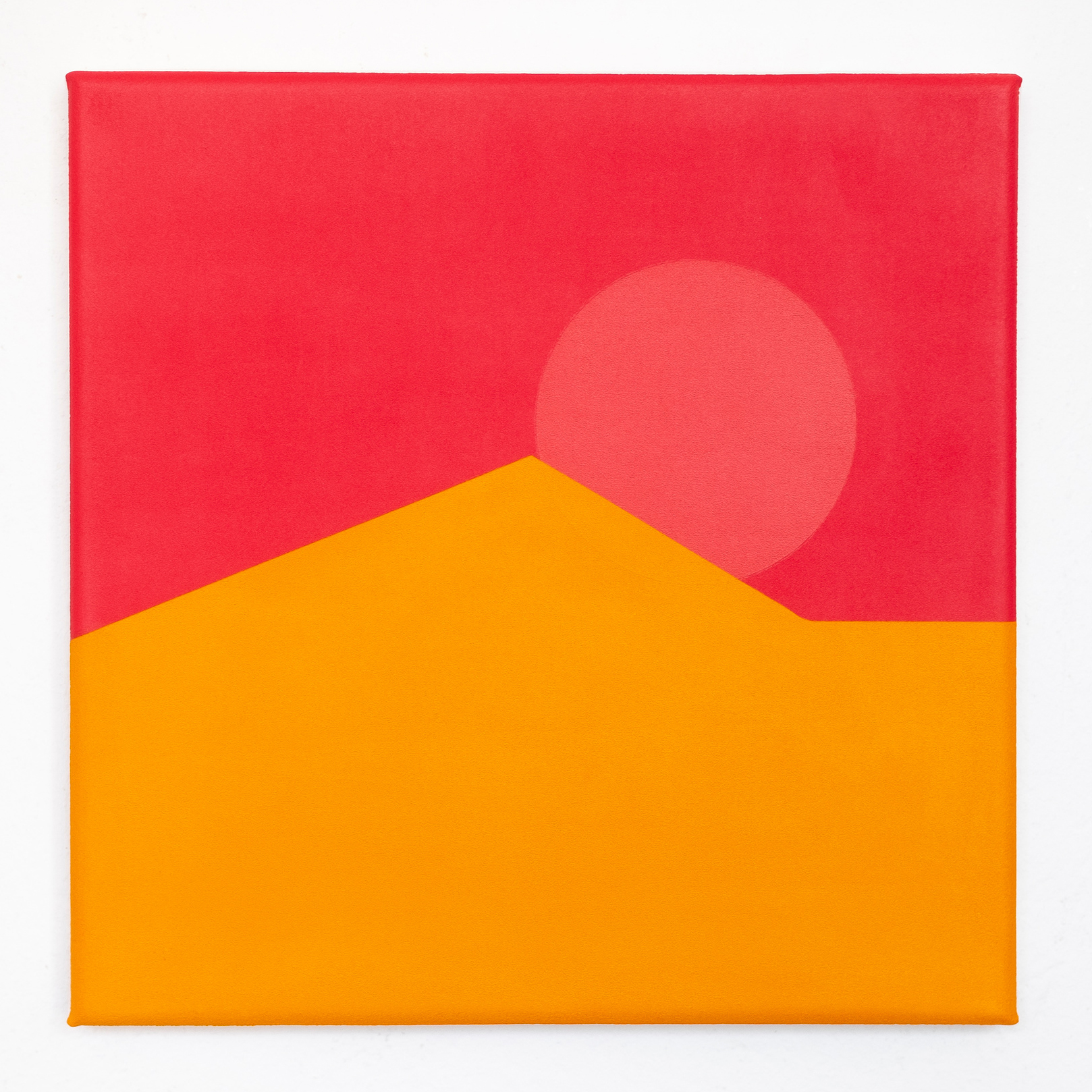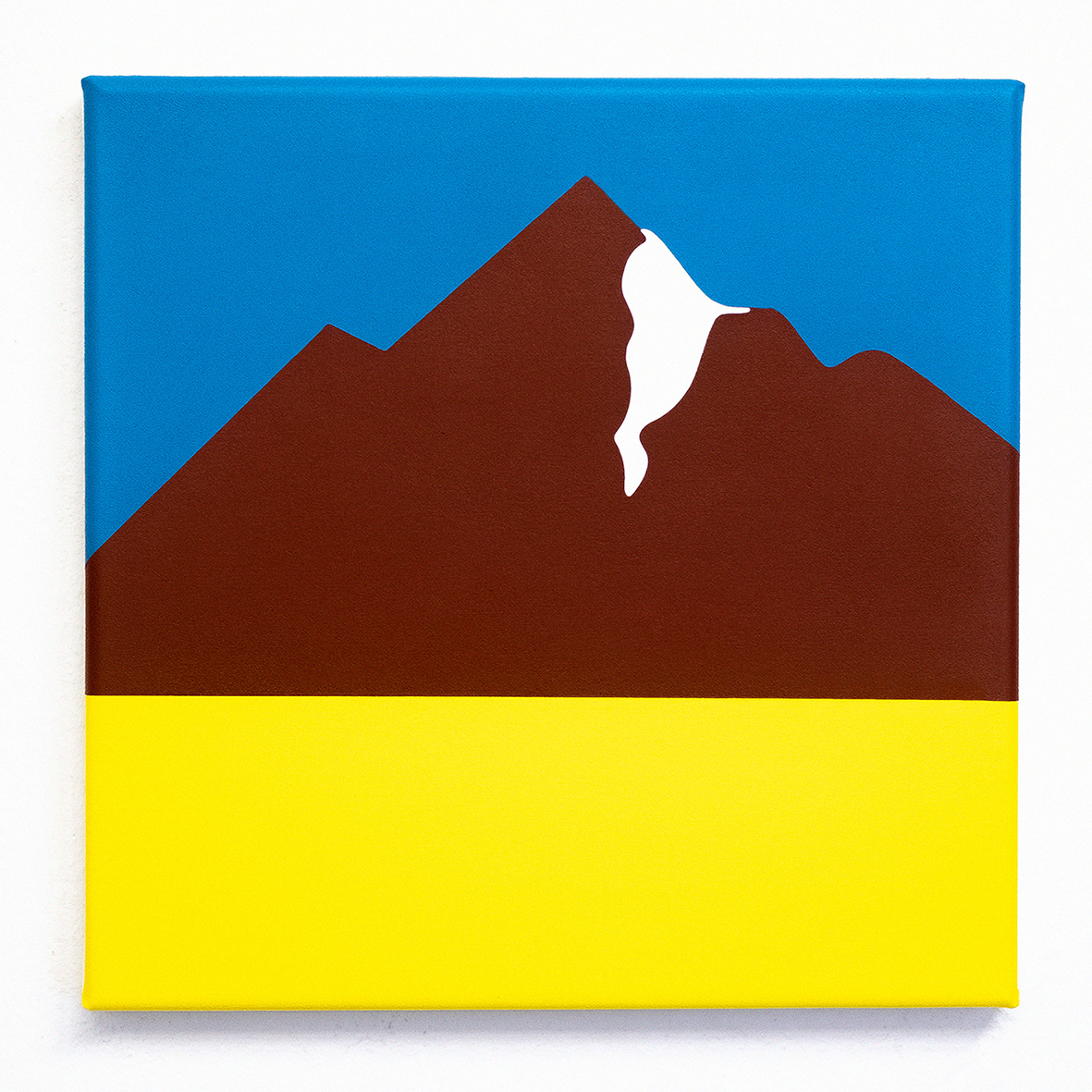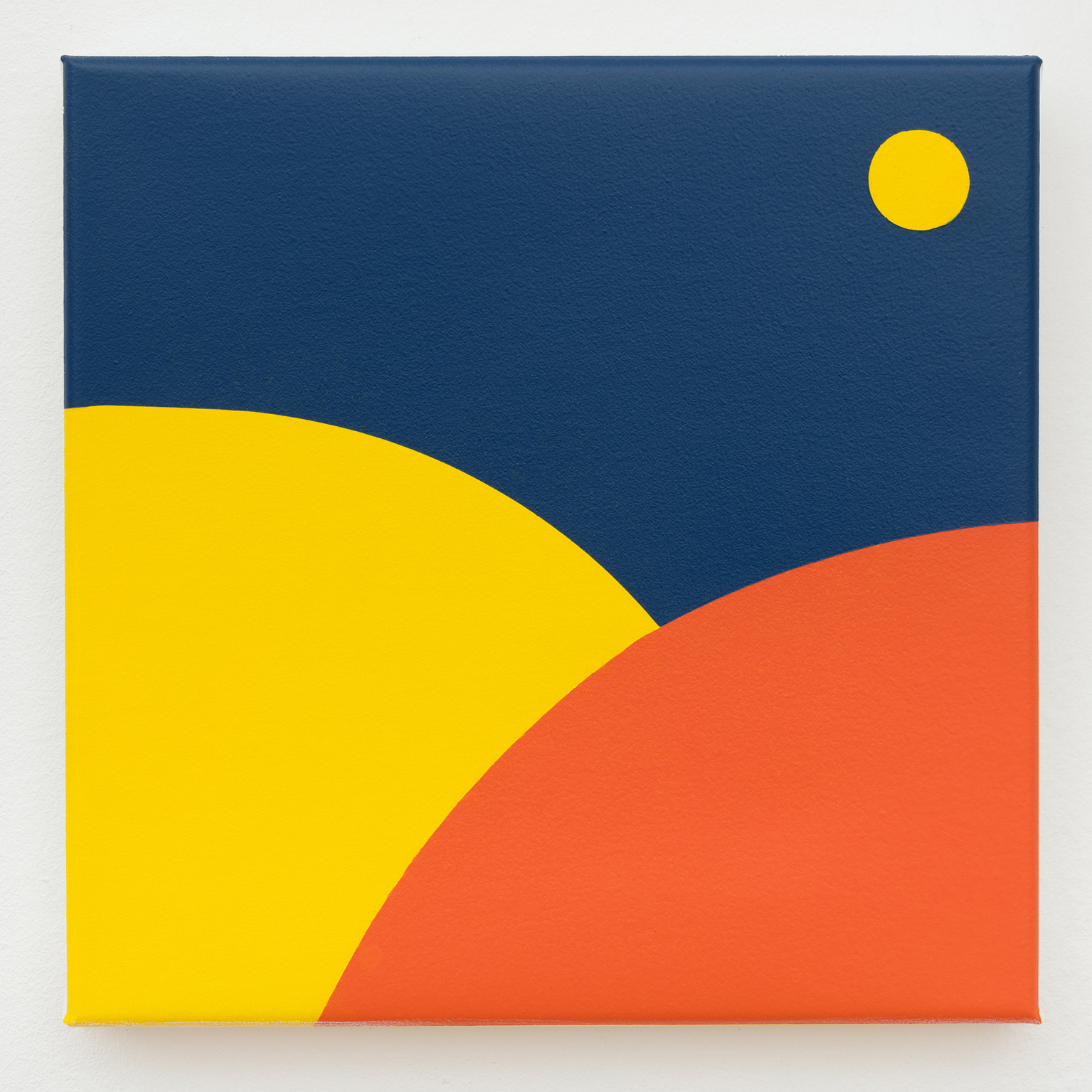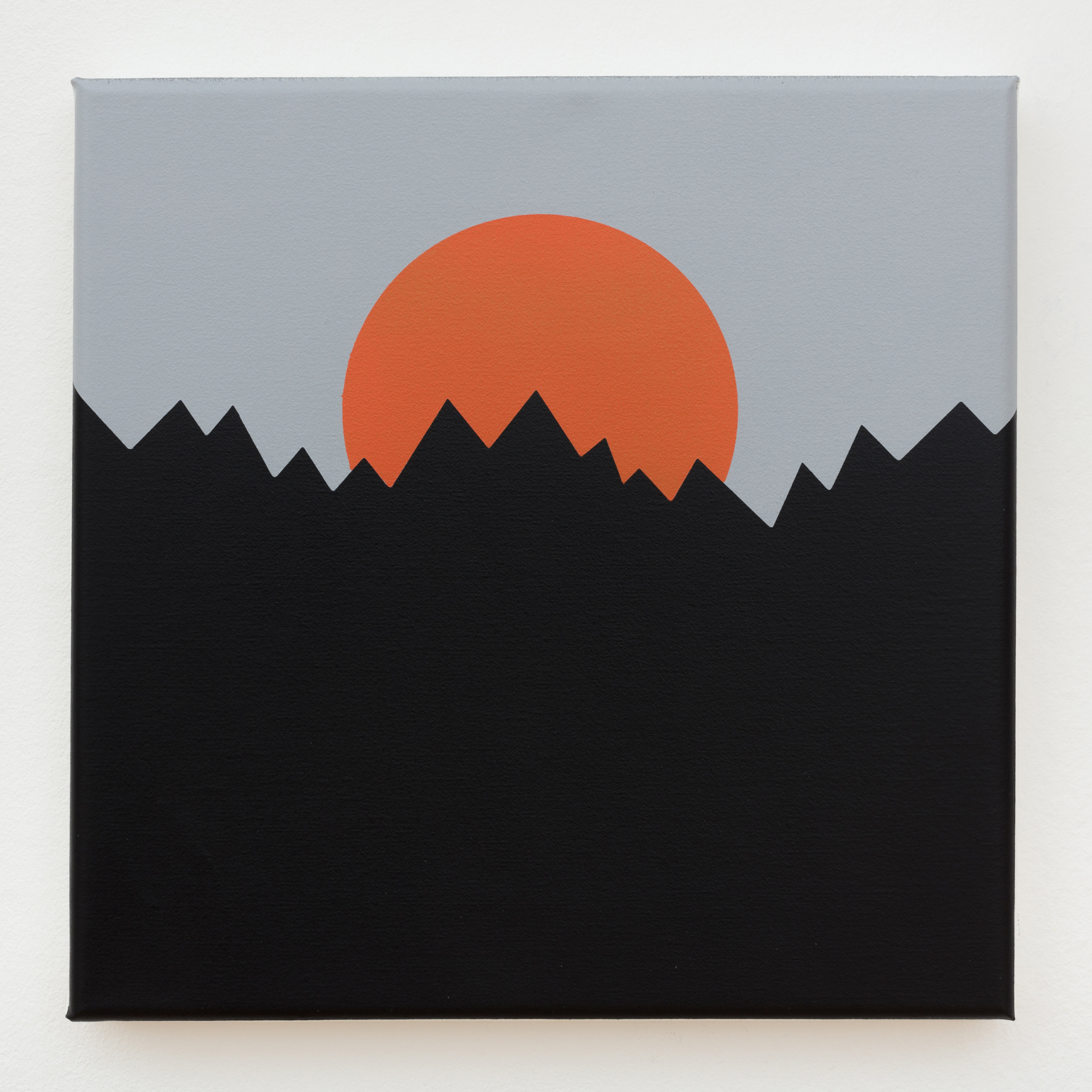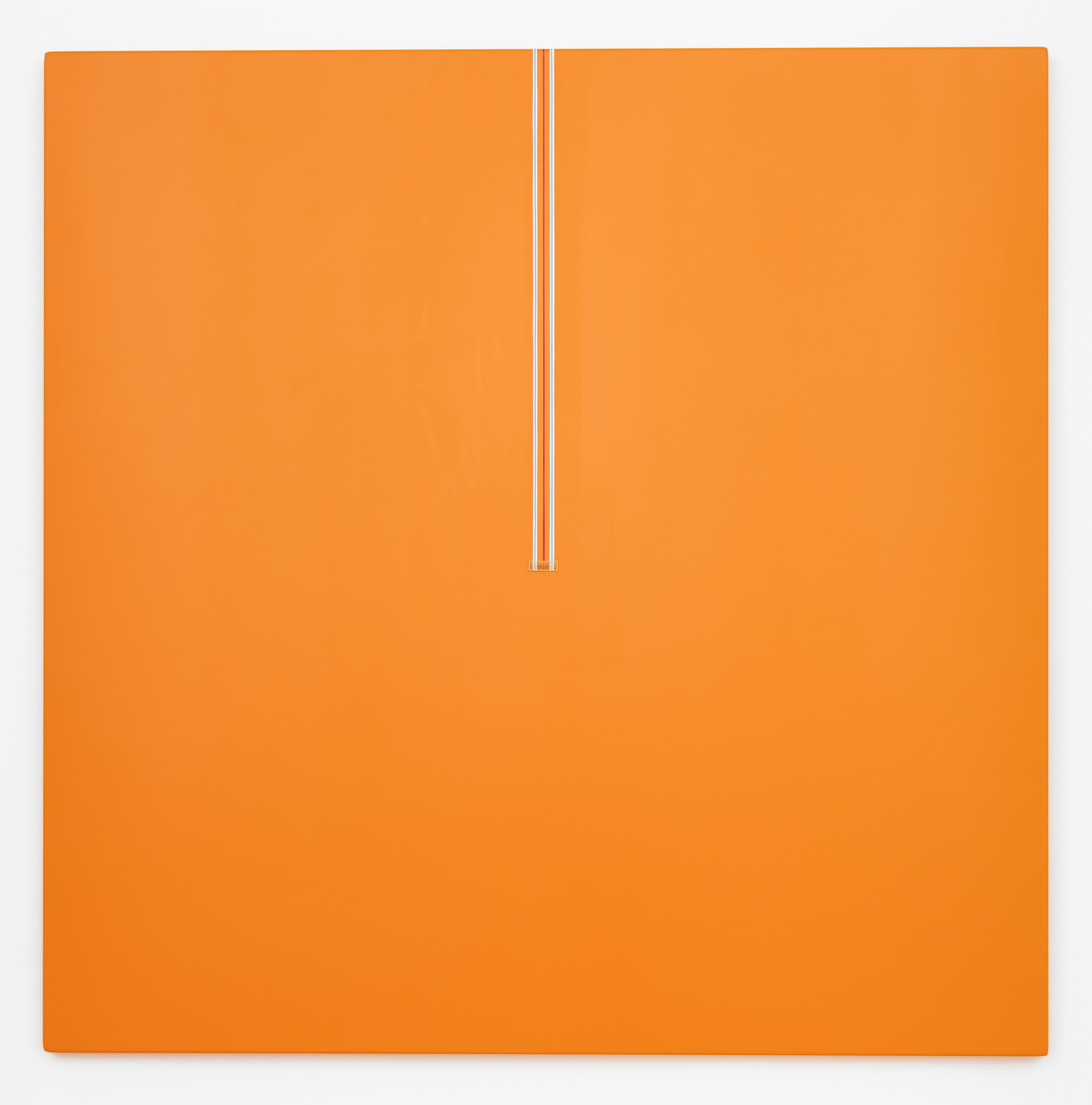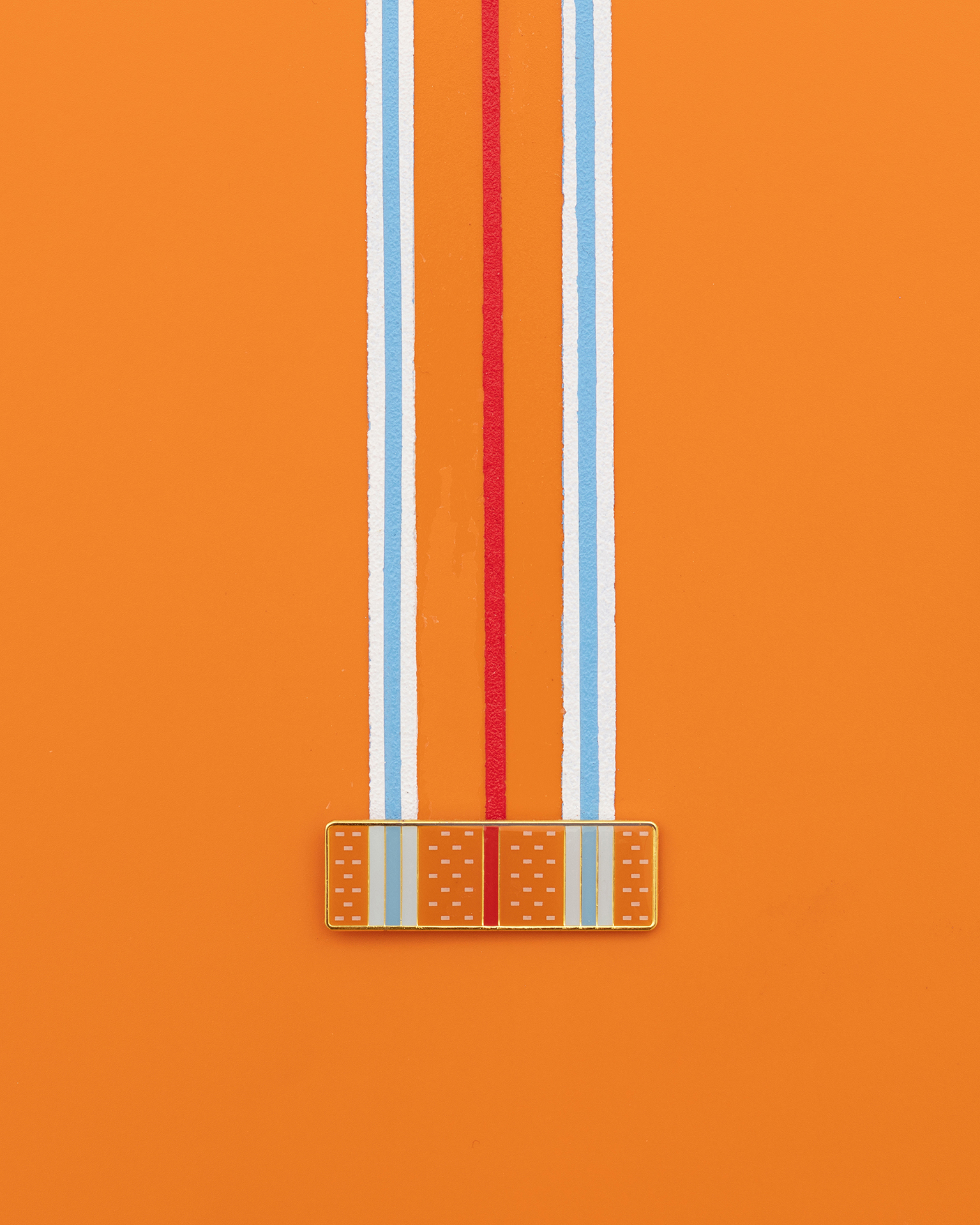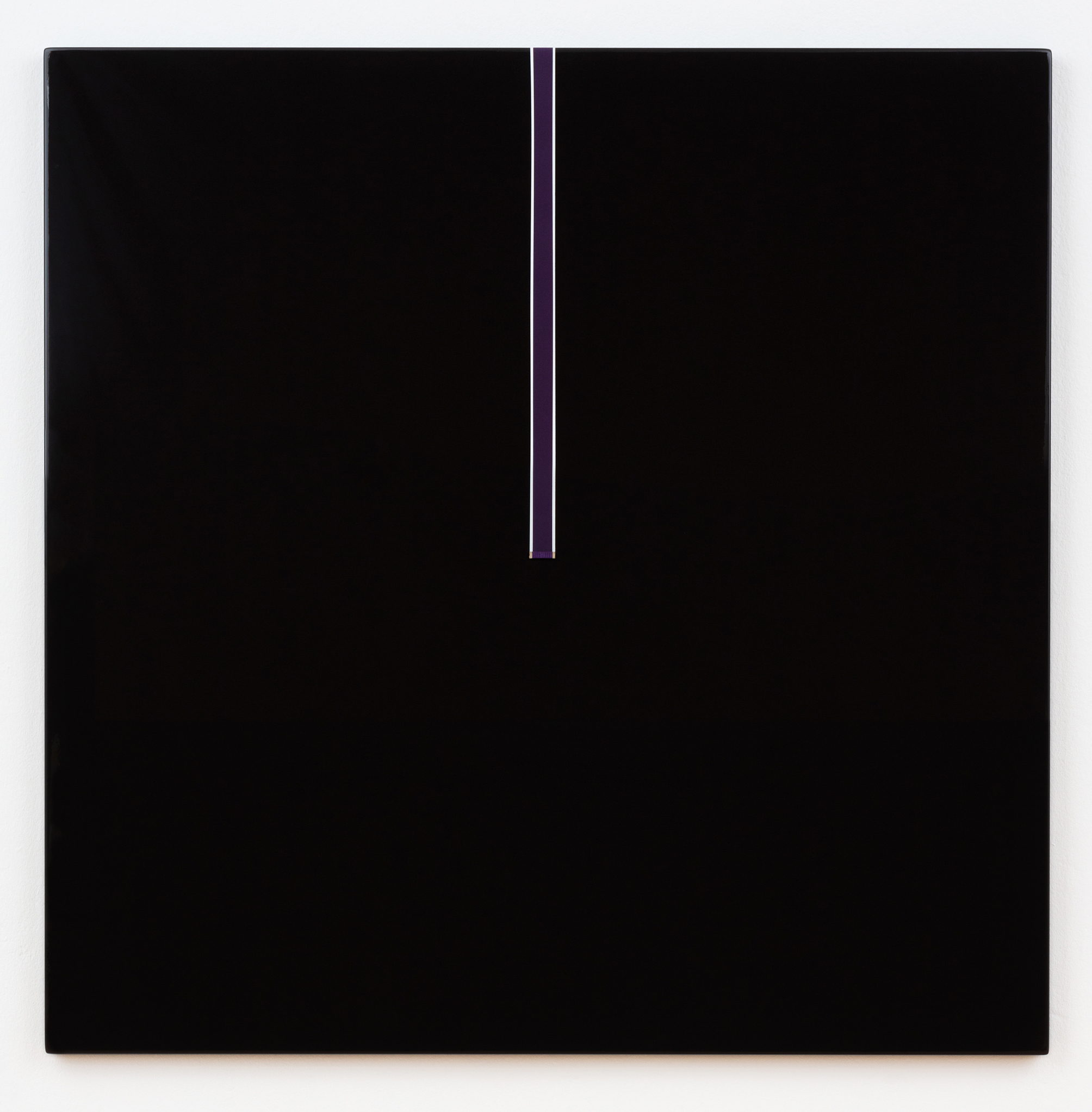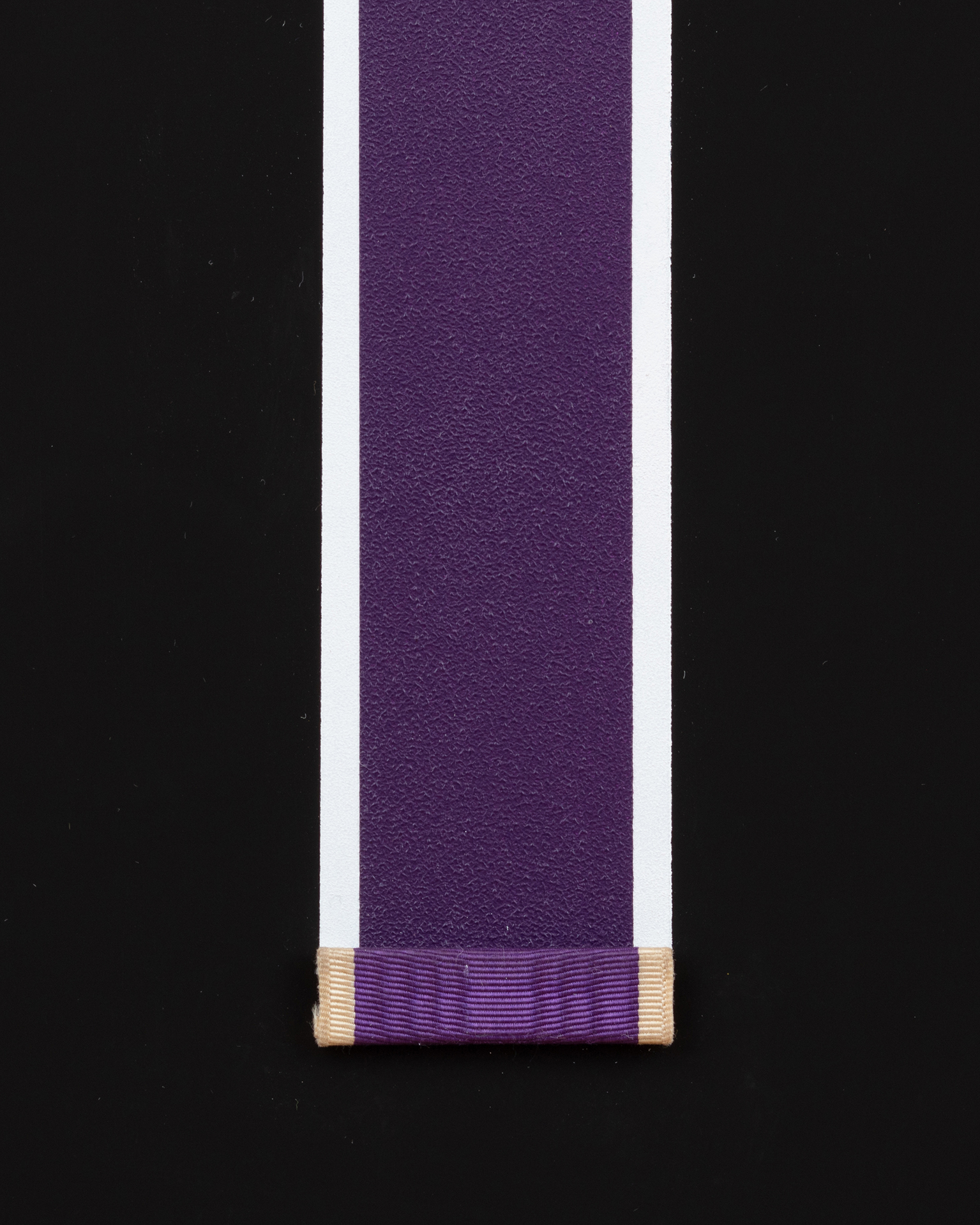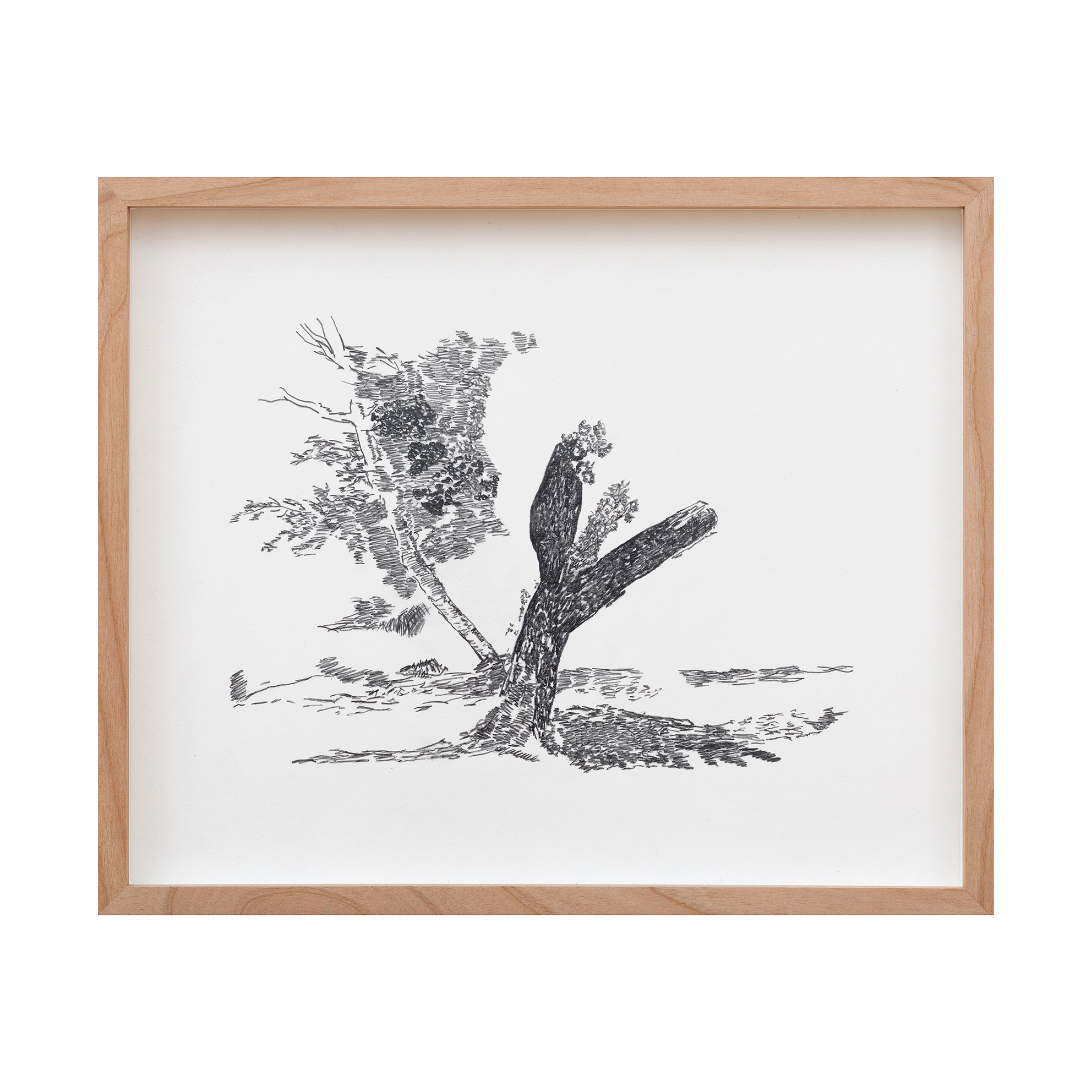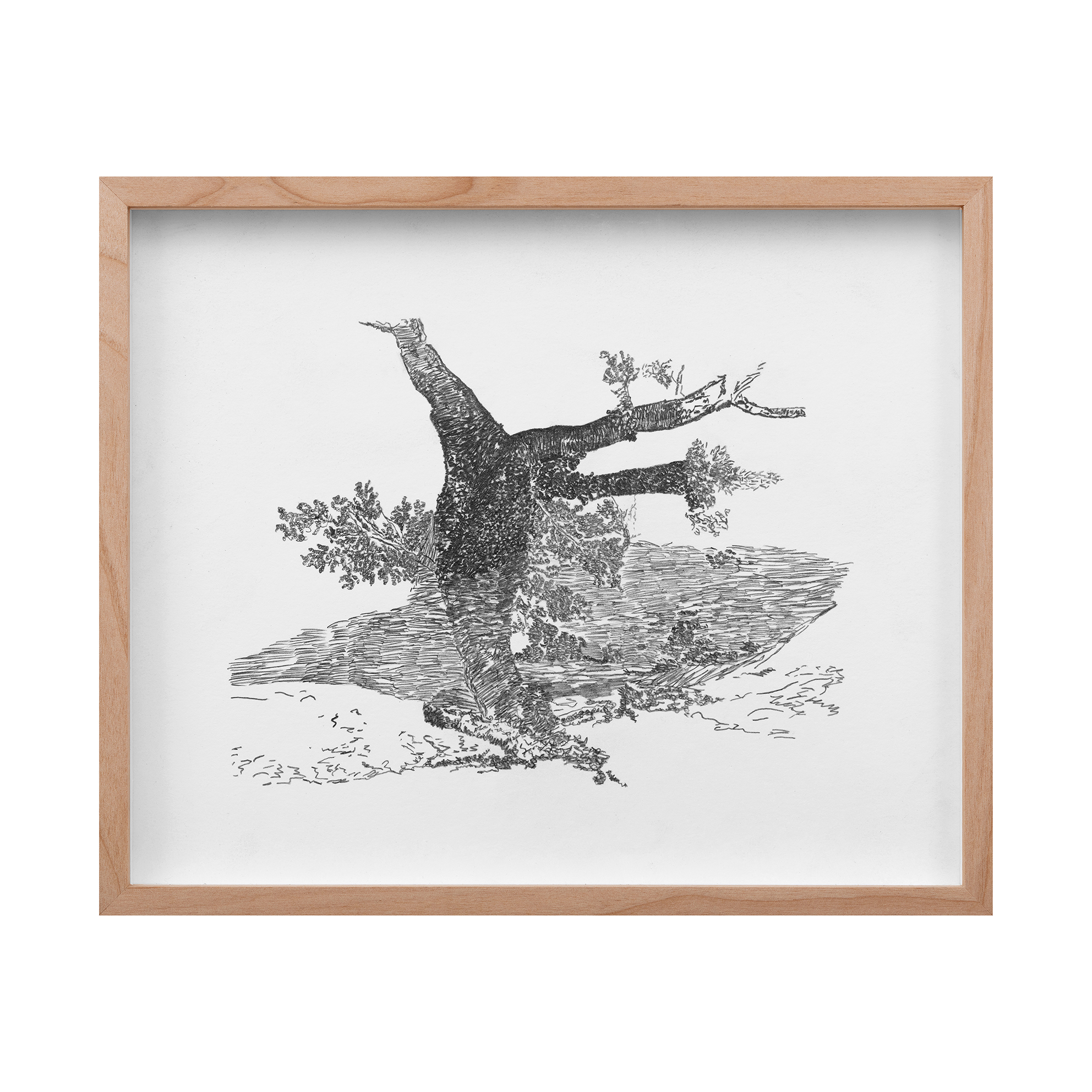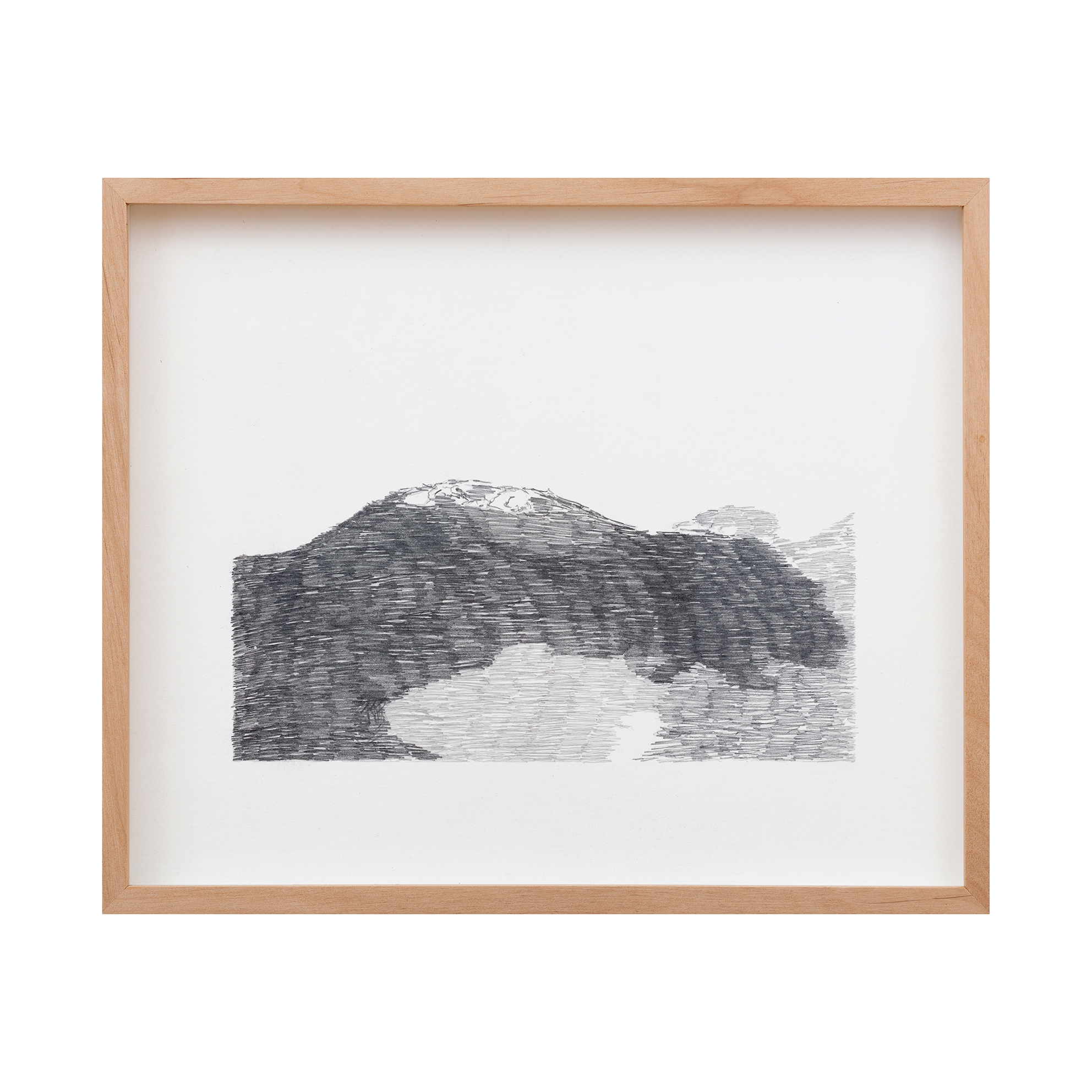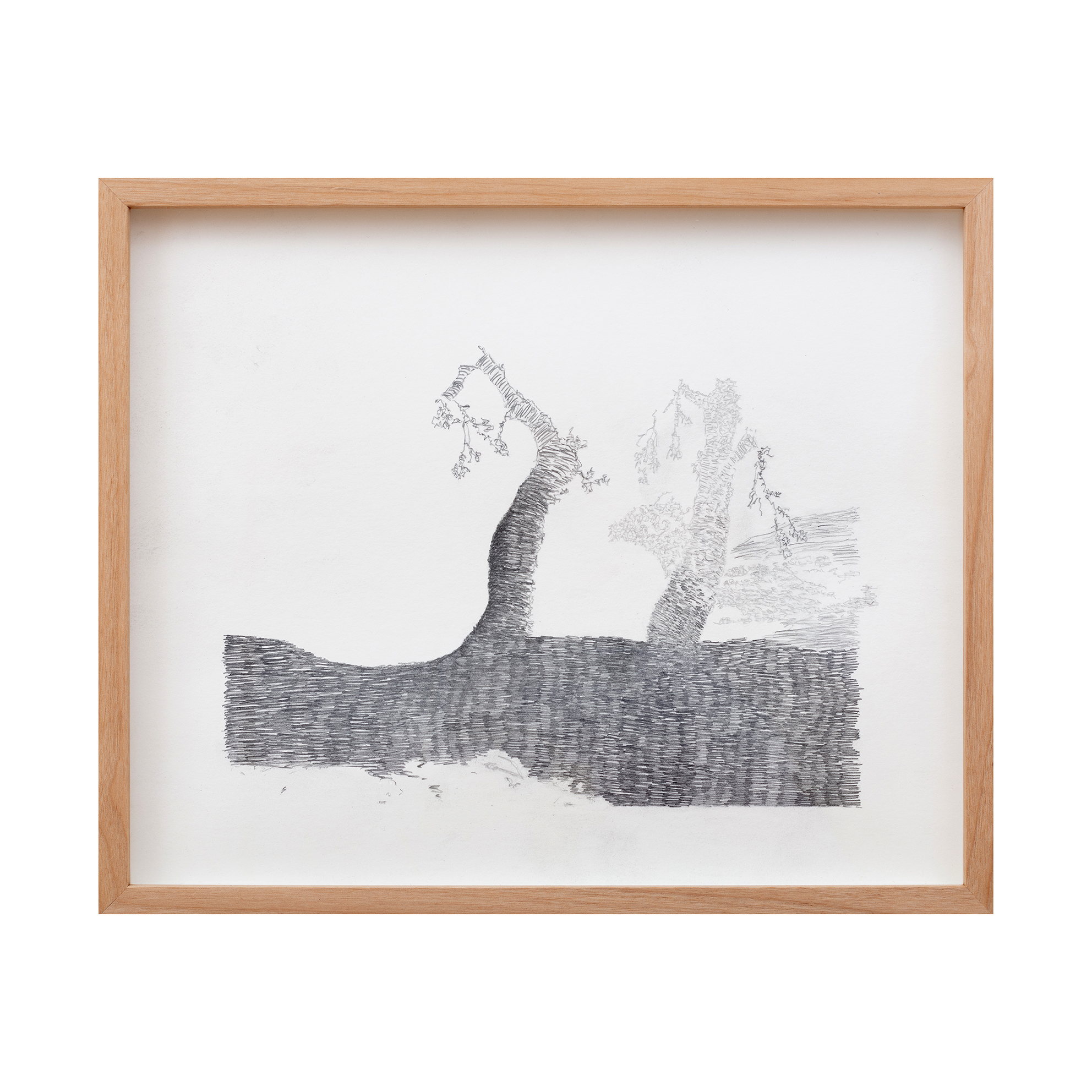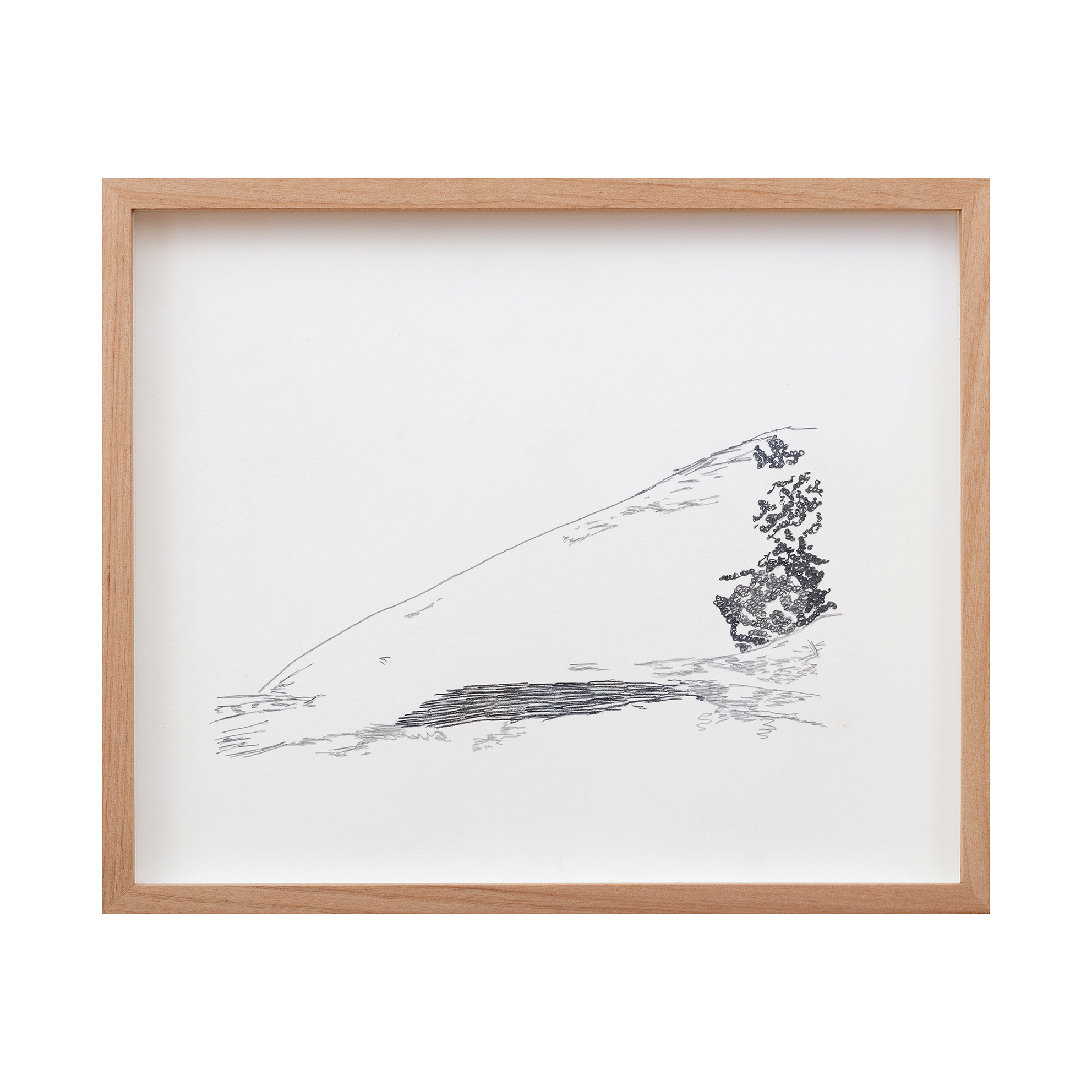PSM
Ariel Reichman
Collective insecurity and its effects on the individual play a role in Ariel Reichman’s work above all when he addresses the themes of war and violence. Reichman was born in South Africa in 1979 where he grew up during apartheid. He emigrated with his family to Israel in 1991, where he had to serve in the compulsory military service. Having witnessed the tragedies of war, trauma forms a driving force behind his work.
The painting series Military Landscapes refers to military uniform tags which often depict landscape motives as their background. Reichman removed the military elements from the original imagery of the tags, concentrating solely on the landscapes as the painterly subject in order to execute them in the manner of “naive“ geometric abstraction, while keeping the color code of the original tags.
War ribbons form the center of a series of paintings on aluminum. A war ribbon is received by soldiers who took part in an act of war, to be worn on the uniform. Taking distance from the objects context, the colors and lines that form the ribbon could seem like a modernistic abstract painting. An actual ribbon is used in each political abstract painting; an object symbolizing heroism and pride, but behind the myth lie the disasters of war.
In the drawing series Pre/post disasters of war, Reichman refers to the print-series Disasters of War (1810-1820) by Francisco de Goya. The etchings depict the atrocities committed by Napoleon’s soldiers in battle with the Spanish population against the French occupation. The pictures show crimes against humanity on both sides, rape, shootings, massacres, mountains of corpses, half dead. Reichman removes the human presence, thus depicting and emphasizing the natural landscape as it would be before or after the war.
Biography
Ariel Reichman, born 1979 in Johannesburg, South Africa, lives and works in Berlin. Solo shows include In Limbo, Kunstverein Arnsberg, DE (2020); Afraid to be Afraid, SP A C E D OU T, Angermünde, DE (2019); The Place Between Here and There, Akershus Art Center in Lilleström, NO (2017); At Night They Sleep, They Do, Center for Contemporary Art, Tel Aviv, IL (2014); 1200 kg Dirt, Petach-Tikva Museum of Contemporary Art, IL (2013).
Reichman’s works have also been presented in MACHT! LICHT!, Kunstmuseum Wolfsburg (2022), Mindbombs, Kunsthalle Mannheim (2021), Class Relations, Kunstverein Hamburg, DE (2018); Current Affairs and Regarding Africa: Contemporary Art and Afro-Futurism, Tel Aviv Museum of Art, IL (2017/2016) and Welcome to the Jungle, Kunst-Werke Institute for Contemporary Art (KW), Berlin, DE (2015).
PSM
PSM is a contemporary art gallery in Berlin, Germany. It was opened in September 2008 by Sabine Schmidt and inherited the name and logo of Schmidt’s grandfather, Paul Schmidt, who founded his machine production factory (Paul Schmidt Maschinenfabrik) after World War II. Since its beginning the gallery has been presenting exhibitions with a favor for large installations and performative formats that encourage the visitors‘ participation. The gallery program thus focuses on conceptual mixed-media art with an emphasis on three-dimensional and performance-based works. There is a wide range of international artists represented and exhibited by PSM, born between 1964 and 1989. Many of them, like Catherine Biocca, Christian Falsnaes, and Nadira Husain, push the boundaries of what it means to address and engage the art viewing public. In September 2017 PSM moved into new premises, located across from Berlin’s Neue Nationalgalerie and close to one of Berlin’s youngest cluster of galleries in Potsdamer Straße.

+493024649200
Sabine Schmidt
+491787855167
Ariel Reichman
Collective insecurity and its effects on the individual play a role in Ariel Reichman’s work above all when he addresses the themes of war and violence. Reichman was born in South Africa in 1979 where he grew up during apartheid. He emigrated with his family to Israel in 1991, where he had to serve in the compulsory military service. Having witnessed the tragedies of war, trauma forms a driving force behind his work.
The painting series Military Landscapes refers to military uniform tags which often depict landscape motives as their background. Reichman removed the military elements from the original imagery of the tags, concentrating solely on the landscapes as the painterly subject in order to execute them in the manner of “naive“ geometric abstraction, while keeping the color code of the original tags.
War ribbons form the center of a series of paintings on aluminum. A war ribbon is received by soldiers who took part in an act of war, to be worn on the uniform. Taking distance from the objects context, the colors and lines that form the ribbon could seem like a modernistic abstract painting. An actual ribbon is used in each political abstract painting; an object symbolizing heroism and pride, but behind the myth lie the disasters of war.
In the drawing series Pre/post disasters of war, Reichman refers to the print-series Disasters of War (1810-1820) by Francisco de Goya. The etchings depict the atrocities committed by Napoleon’s soldiers in battle with the Spanish population against the French occupation. The pictures show crimes against humanity on both sides, rape, shootings, massacres, mountains of corpses, half dead. Reichman removes the human presence, thus depicting and emphasizing the natural landscape as it would be before or after the war.
Biography
Ariel Reichman, born 1979 in Johannesburg, South Africa, lives and works in Berlin. Solo shows include In Limbo, Kunstverein Arnsberg, DE (2020); Afraid to be Afraid, SP A C E D OU T, Angermünde, DE (2019); The Place Between Here and There, Akershus Art Center in Lilleström, NO (2017); At Night They Sleep, They Do, Center for Contemporary Art, Tel Aviv, IL (2014); 1200 kg Dirt, Petach-Tikva Museum of Contemporary Art, IL (2013).
Reichman’s works have also been presented in MACHT! LICHT!, Kunstmuseum Wolfsburg (2022), Mindbombs, Kunsthalle Mannheim (2021), Class Relations, Kunstverein Hamburg, DE (2018); Current Affairs and Regarding Africa: Contemporary Art and Afro-Futurism, Tel Aviv Museum of Art, IL (2017/2016) and Welcome to the Jungle, Kunst-Werke Institute for Contemporary Art (KW), Berlin, DE (2015).
PSM
PSM is a contemporary art gallery in Berlin, Germany. It was opened in September 2008 by Sabine Schmidt and inherited the name and logo of Schmidt’s grandfather, Paul Schmidt, who founded his machine production factory (Paul Schmidt Maschinenfabrik) after World War II. Since its beginning the gallery has been presenting exhibitions with a favor for large installations and performative formats that encourage the visitors‘ participation. The gallery program thus focuses on conceptual mixed-media art with an emphasis on three-dimensional and performance-based works. There is a wide range of international artists represented and exhibited by PSM, born between 1964 and 1989. Many of them, like Catherine Biocca, Christian Falsnaes, and Nadira Husain, push the boundaries of what it means to address and engage the art viewing public. In September 2017 PSM moved into new premises, located across from Berlin’s Neue Nationalgalerie and close to one of Berlin’s youngest cluster of galleries in Potsdamer Straße.
